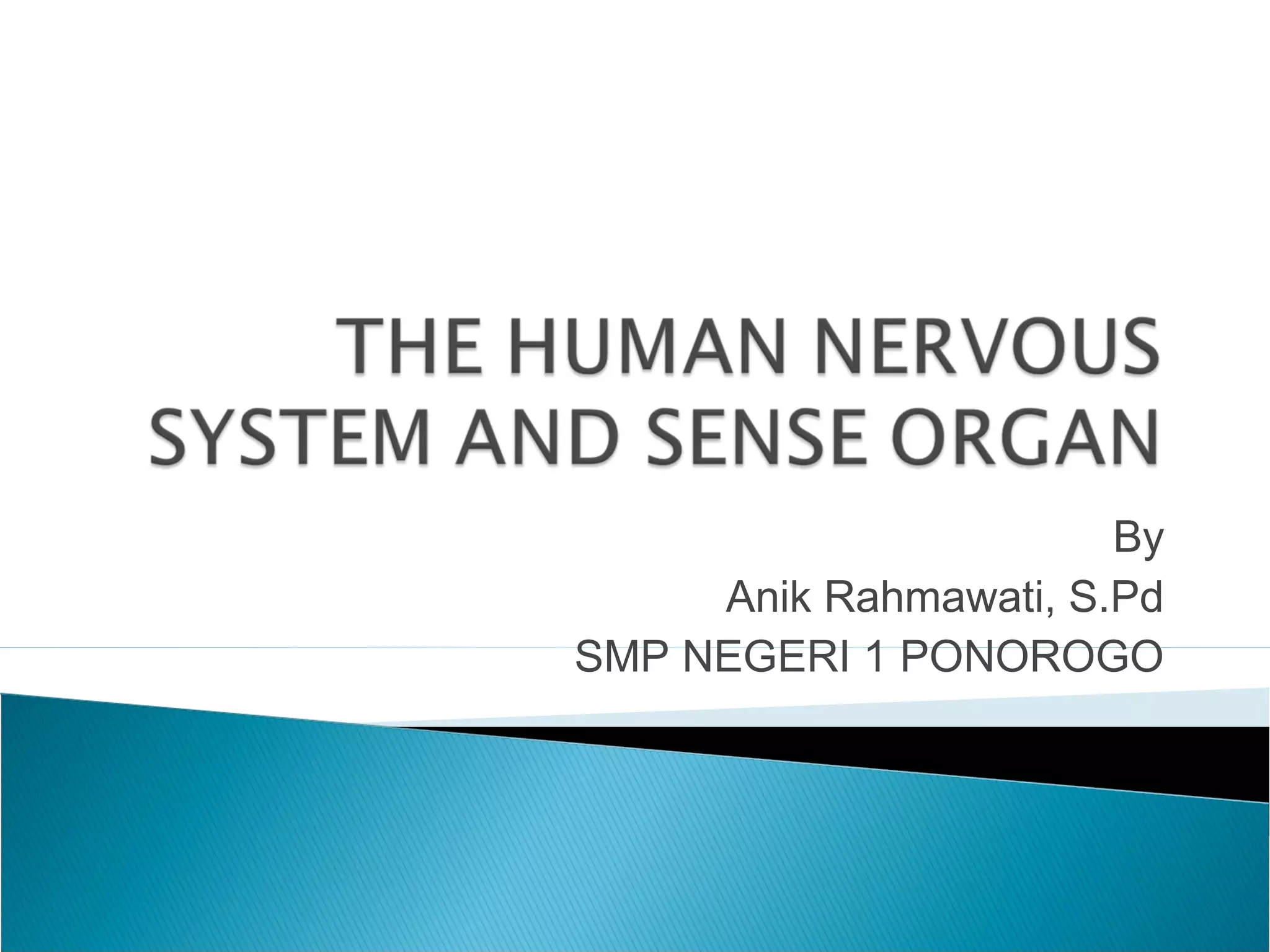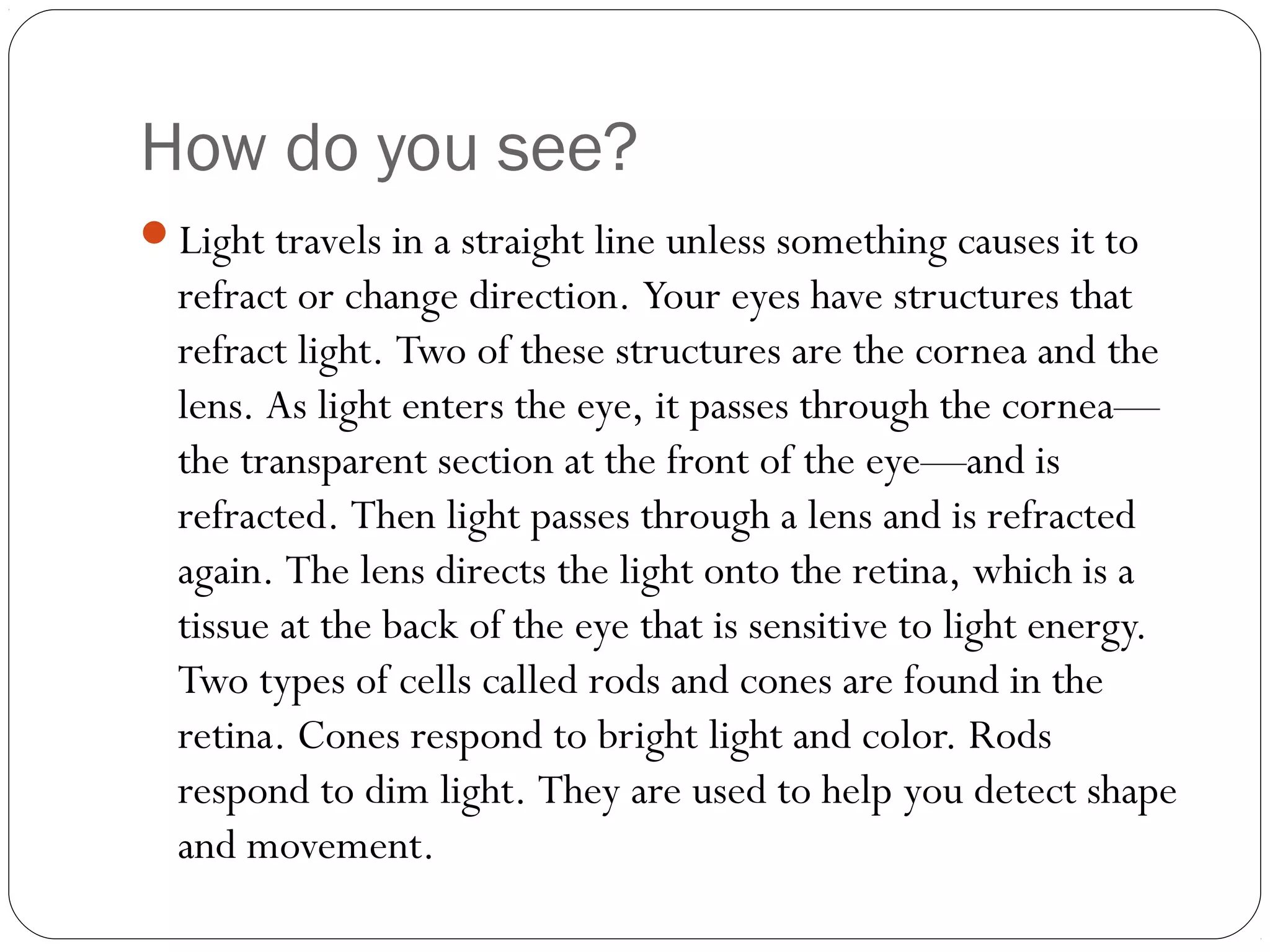The document discusses the human nervous system and sense organs. It provides details on the following:
1. The human nervous system has three main functions - receiving sensory input, integration in the central nervous system, and generating motor output in response to stimuli.
2. There are three main types of neurons - sensory neurons that receive information, interneurons that relay messages, and motor neurons that conduct signals to muscles and glands.
3. The main senses discussed are taste via taste buds on the tongue, smell via olfactory receptors in the nose, vision via light stimulating photoreceptors in the retina, and hearing via sound waves causing vibrations that stimulate hair cells in the cochlea.



























![2. SENSE OF VISION
Photoreceptors [Gk. photos, light; L. receptor,
receiver] are sensory receptors that are sensitive
to light
Jalan pulo indah- asri raya RT 02 RW 04 No 1.
Kelurahan petir Cipondo-tangerang,
](https://image.slidesharecdn.com/thehumannervoussystemandsenseorgan-131109103558-phpapp01/75/The-human-nervous-system-and-sense-organ-28-2048.jpg)











